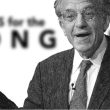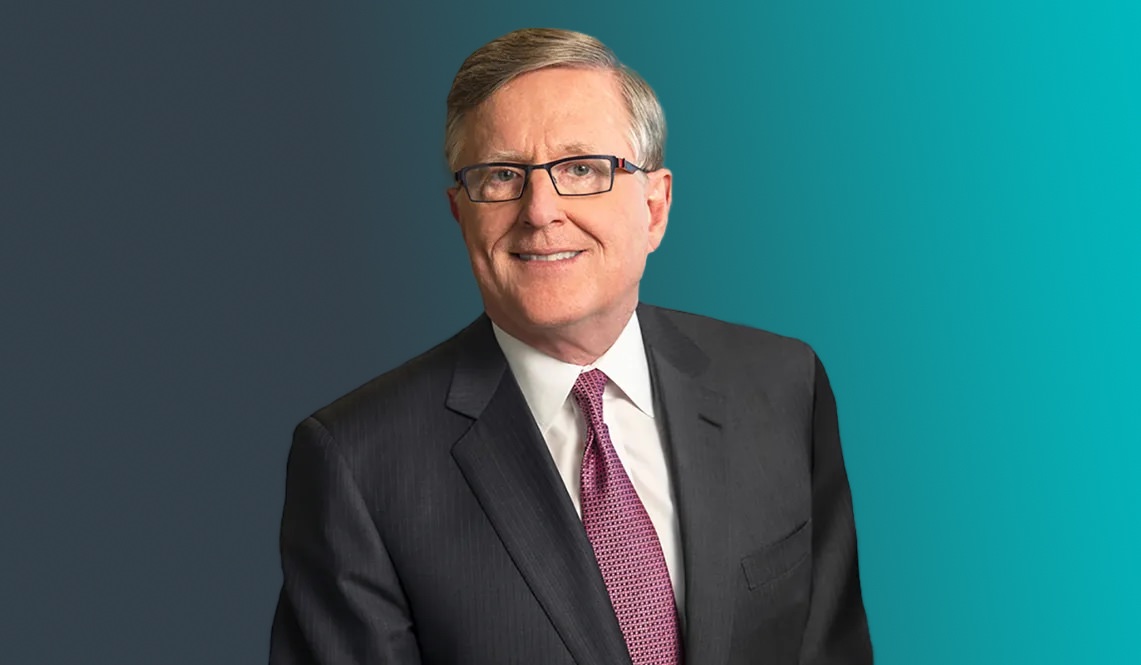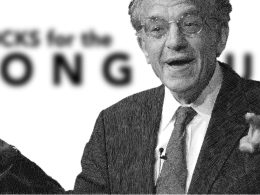Opening the Data Vault: The Birth of Modern Finance
When David Booth walked the halls of the University of Chicago's Graduate School of Business in 1969, he wasn't just earning a PhD—he was stepping into what he calls "a revolution in finance."
"It was a total paradigm shift in thinking about investing," Booth recalls. "And it was brought about largely by data and computers. Before 1963, the data weren't there to examine much of anything. But that all changed in the '60s."
Booth was surrounded by a cast of academic giants—many future Nobel Prize winners—like Gene Fama, Merton Miller, Myron Scholes, and Fischer Black. Larry Siegel, Director of Research at the CFA Institute Research Foundation1,2 and host of this conversation, puts it plainly:
"We had Nobel Prize winners handing out papers that we thought were just for class. Turned out they were from the greatest financial thinkers of all time."
The access to raw securities data from the Center for Research in Security Prices (CRSP) made empirical finance possible for the first time. Booth remembers the energy vividly:
"Fama says it was like shooting fish in a barrel, coming out with new papers. Nobody had ever been able to process the data before. Something like a simple linear regression—before that, you'd be doing it on an HP-12C or something. It was fraught with problems."
One of the first shocks came with early CRSP studies, such as the 9.3% annualized return on equities uncovered by University of Chicago Graduate School of Business Professors, Jim Lorie and Larry Fisher.
"People were shocked. They had no idea. Trust departments weren't getting anywhere near that."
A Career in Application, Not Theory
Booth originally set out on an academic path, but soon realized his true talent wasn't theorizing—it was translating theory into practice.
"I finally decided I didn't want to be a professor," he says. "I didn't think my comparative advantage was coming up with the next great idea. It was applying the science that had already been developed."
The breaking point came after he and Roger Ibbotson presented a paper on the relationship between money supply and stock prices in Milton Friedman's legendary "Money Workshop." Despite strong reviews from finance faculty, Friedman's response was dismissive.
"He was too wedded to his positions to listen to reasonable arguments. That night, I thought—I'm not really cut out to be a professor."
The very next day, Booth walked into Gene Fama's office and said he was done. Fama, in classic Fama fashion, didn't blink:
"He said, ‘I've got this guy Mac McQuown at Wells Fargo starting one of the first index funds. I'll call him.'"
Wells Fargo, Options Theory, and the Origins of Passive Investing
Booth soon found himself working alongside legends: Myron Scholes, Fischer Black, and Mac McQuown. While Booth was helping build the S&P 500 index fund at Wells Fargo, Scholes and Black were crafting their now-famous options pricing model.
"These were wild times. New ideas were springing up everywhere. It was incredibly exciting."
It was here that Booth began to question the rigidity of indexing. "Indexing is good," he says, "but it's not great. It's so mechanical, so rigid."
Booth realized that even in passive investing, there was room for nuance:
"Our belief was, if you give people a little flexibility and judgment, they can do better than people with rigid decision-making."
Small Beginnings, Big Ideas: The Launch of Dimensional
Dimensional Fund Advisors (DFA) was born in 1981 with a deceptively simple idea: give institutional investors access to small-cap stocks—an underserved segment ignored due to capacity constraints in active management.
"Our pitch was: large and small. Institutions already held large caps. We'd give them access to small."
The academic justification came from Rolf Banz's PhD dissertation, which Booth calls "the first really robust study that argued against the Capital Asset Pricing Model."
They didn't initially pitch performance. In fact, Booth deliberately downplayed it.
"People would say, ‘How have small caps done?' And I'd say, ‘I'm not going to tell you.' They'd ask why, and I'd say, ‘So you believe the story.' Belief is stronger than data every day of the week."
But the early years were brutal.
"From 1981 to 1990, it was the worst nine-year relative performance of small vs. large in history. The S&P compounded at 14%. Our fund? Two percent."
What kept clients from leaving?
"Strong theory. We still believed in holding large and small caps in a diversified portfolio. That didn't change."
Factor Investing—Before It Had a Name
Without intending to, Booth and his team pioneered factor investing.
"In my limited thinking, I thought of small caps as a different dimension. Small stocks not only behaved differently—they behaved systematically differently. We were the first factor investors without using the term."
Later, working with Ken French and Gene Fama, Dimensional helped validate the multifactor model: market, size, and value—eventually expanding into profitability and investment factors.
"Even if people copy how we structure portfolios, they can't copy how we implement them."
Trading Smarter: The Dimensional Edge
Dimensional also challenged one of indexing's sacred cows: buying or selling at the day's closing price.
"If you want to track an index exactly, you have to trade at the closing price—particularly when new stocks enter the index. Everybody's buying at once."
Instead, Dimensional spread trades throughout the day and avoided crowd behavior.
"We said, we're not going to do that. We're going to use judgment. Understand market mechanisms. Avoid rushes. Add value in small ways—trading, securities lending, portfolio construction."
The Advisor Channel: A $400 Billion Surprise
In 1988, an advisor named Dan Wheeler came to Booth's office with a proposition: open DFA funds to fee-only advisors. Booth was hesitant.
"We read about individuals and figured they'd trade a lot, have unrealistic expectations."
But Wheeler was persuasive, and DFA agreed—under strict conditions. Advisors had to attend a two-day educational seminar at their own expense.
"No trips to Honolulu," Booth jokes. "It was self-selection. If they were willing to show up, they probably believed what we believed."
The result? A new distribution channel that now manages over half of DFA's USD$800 billion AUM.
It's notable, here, to mention that Canadian investors can access Dimensional Fund Advisors’ renowned investment expertise through its sub-advisory relationship with Manulife Investment Management.
As the sole provider of Dimensional’s strategies in Canada, Manulife offers a suite of Multifactor ETFs, sub-advised by DFA.
This exclusive relationship brings Dimensional’s decades of academic research, factor-based portfolio design, and cost-efficient implementation directly to Canadian portfolios—delivering institutional-quality investing to the everyday investor.
The Gift That Named a School
Years later, with Dimensional flourishing and Booth's family financially secure, he made a bold move: a $300 million donation to the University of Chicago—the largest ever to a business school.
"I told the dean, think of this as a partnership distribution. The university was always my partner."
That gift renamed the school in his honor: the University of Chicago Booth School of Business.
Advice to Entrepreneurs: Embrace Uncertainty, Be Useful
When Siegel asks Booth for advice to future entrepreneurs, Booth responds with the modesty of someone who'd built a global firm from a spare bedroom:
"I don't give advice. But I'll share what I think."
His key messages:
- Find your comparative advantage: "Have a passion for it. Figure out what you do better than others."
- Question what you want: "If you succeed, is that actually what you want? Be careful—you might get it."
- Create something people need: "Why would people hire you instead of a big firm? What do you offer that's different?"
The Future: Financial Advisors as Life Architects
Booth sees the financial advisory profession as the next frontier—especially when powered by technology.
"People need advisors. Full stop. But the cost is high. If you can figure out how to use AI and automation to eliminate administrative drag, you can focus your time where personalization adds value."
His vision for modern advisors: efficient, empathetic, and deeply personal.
"We call it L.I.F.E.—Lifetime Integrated Financial Experience. There's a growing link between your financial life and your personal life."
Retirement, marriage, children, career changes—Booth believes advisors must help clients navigate all of it.
"It's no longer just picking mutual funds. It's about preparing people for financial and emotional decisions across a lifetime."
It's a Good Time to Be a CFA
In closing, Booth clarifies the real human value that CFA professionals can deliver:
"If clients can stick with sensible investment solutions, they'll get the benefits of compounding. That's the public service you provide."
As for his own journey?
"It feels good. Painful, sometimes, sure. But the thrill is—it worked."
A Life Compounded
David Booth's legacy is more than a firm or a fund. It's a model of how evidence-based thinking, humility, and purpose-driven innovation can compound—just like investment returns—into something transformative.
From classrooms to capital markets, from a PhD student selling shoes to the namesake of a world-renowned business school, Booth's story is a testament to long-term thinking, empirical conviction, and doing the work—quietly and thoroughly—while others sell alpha.
In a world awash in hype, Booth has always kept it simple: believe in markets, believe in data, believe in people.
"The market does a pretty good job of sorting through prices," he says. "We're just here to respect that."
Footnotes:
1 "Financial Thought Exchange Podcast: David Booth on Founding a Firm Based On Revolutionary Academic Innovations." 28 April 2025.
2 "Financial Thought Exchange Podcast: David Booth on Founding a Firm Based On Revolutionary Academic Innovations (Part 2)." 28 April 2025.















